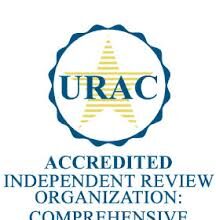This is Part 2 of a two-part post featuring how Liberating Structures (LS) have been applied to cultural change efforts and to prevent the transmission of superbugs. Part 1 featured Dr. Michael Gardam and 5 hospitals that succeeded in preventing spread of superbugs.
This is Part 2 of a two-part post featuring how Liberating Structures (LS) have been applied to cultural change efforts and to prevent the transmission of superbugs. Part 1 featured Dr. Michael Gardam and 5 hospitals that succeeded in preventing spread of superbugs.
Liberating Structures focus attention on very small changes in routine interactions called microstructures. They disrupt conventional patterns in how we work together. They change dramatically the way results are generated without expensive investments, complicated training, or dramatic shifts in an organization’s macrostructure.
When LS are introduced many of the big five conventional approaches that people use all the time—presentations, open discussions, managed discussions, status reports, and brainstorms—become less attractive or fall out of favor. Liberating Structures make it possible to distribute control so that participants can shape next steps together. Everyone is included and unleashed.
However, the first step is recognizing that routine patterns are present and can be redesigned. They are subtle and easily overlooked. Ronald Laing the Scottish Psychiatrist suggests,
“The range of what we think and do is limited by what we fail to notice. And because we fail to notice that we fail to notice, there is little we can do to change, until we notice that failing to notice shapes our thoughts and deeds.”
To date, Liberating Structures initiatives in healthcare include:
- Preventing the spread of superbugs in the US and Canada
- Reducing errors in chronic safety challenges (e.g., medication reconciliation and patient falls)
- Shifting hospital culture from a tradition of top-down only to more self-organization
- Starting-up a complexity-science inspired research consortium
- Creating scenarios for strategy-making in an unpredictable market
- Connecting innovators across the US and the UK
- Launching a variety of transformational leadership initiatives in nursing and medical schools.
Users have experienced dramatic results in all these settings.
Efforts in one area often spill over into other settings. Work with preventing superbugs spread out of hospitals to nursing homes, home health, and schools. LS practitioners take what they learn into the rest of their life. For example, liberating microstructures learned on a hospital unit have been re-purposed for teaching newly minted nurses, doctors, and therapists.
Our experience applying Liberating Structures to healthcare barely scratches the surface of what is possible. Liberating Structures offer a refreshingly disruptive innovation.
Liberating Structures are disruptive because they can easily and inexpensively replace conventional microstructures that are in everyday use. Thirty-three LS are easy to learn. A working knowledge of individual LS can be developed in less than an hour. LS are not only for leaders and change experts, but also for every person in the organization to use.

Version 2.1 of the Liberating Structures menu. LS add 33 new microstructures to the big five conventional routines—presentations, open discussions, managed discussions, status reports, and brainstorms.
LS are notbest practices imposed on a whole organization. They do not rely on expensive and lengthy efforts to train people in an attempt to change their behaviors. They are instead a set of simple microstructures from which individuals and groups can choose what suits their likes and dislikes then mix-and-match them flexibly to address their challenges.
To shift to a more innovative organizational culture, we keep trying the same conventional strategies expecting different results.
Conventional investments focus on developing basic skills in leaders/managers and the advanced training of experts (e.g., Lean, facilitator training, change management). Everyone else—the vast majority of people—are not included or engaged in learning how to shape their future together.
Paradoxically, the conventional mindset about what it takes to shift culture maintains the established pattern. To make BIG changes toward a more engaged innovative culture, we must make BIG moves. The BIG moves include: investing cash or other assets; getting new people or upgrading the people we have; and, rearranging the macro-structure of the organization (i.e., HR policies, organizational chart, core operating processes).
The calculus of how these factors combine—new leaders, investments, policy shifts, and reorganizations—has garnered nearly all the attention of the business press. What is missing in this calculus is so small and familiar it is very easy to overlook.
Like Wikipedia, Liberating Structures create simple rules to guide and liberate everyone’s contributions. Wikipedia’s must-dos and must-not dos specify how anyone can write articles, edit content, reach consensus about the facts, and share with attribution. This structure makes it possible for a diverse community to generate and sustain accurate content that compares favorably with professionally edited encyclopedias. With Liberating Structures, innovation “novices” become expert contributors.
LS make it easy to include everyone in developing skills and using them everyday without extensive training. Everyone includes leaders, managers, the frontline as well as clients. Read about a business transformation story here in which clients were included directly in transformation efforts.
Like all disruptive innovations, no one expects it. Shifts in the pattern of interaction make it possible to immediately include, engage and unleash everyone in shaping the future. Small changes generate breakthrough results. LS reveal an immense source of untapped knowledge, capability, and momentum. Expect surprise!








